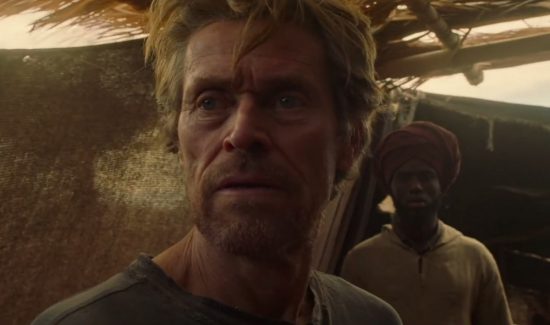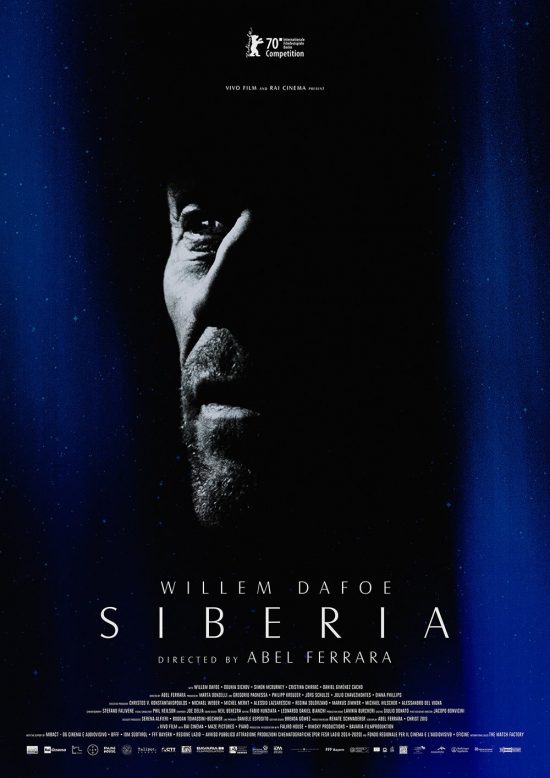LFF 2020 Review: Siberia – “A provocative piece of art”
Siberia is the sixth and latest collaboration between Willem Dafoe and writer/director, Abel Ferrara. Dafoe stars as Clint, a man who has cut himself off from the majority of the world living in seclusion, running a bar in a harsh, snow-covered landscape. There, he encounters an Eskimo (as per the cast list) whom he can only communicate with on a basic level, then a woodsman, and then a young heavily pregnant woman and her Baboushka. From this point onwards we slide headfirst into Ferarra’s Jungian dream experiment, a stream of unconsciousness if you must.
There are the typical dream and nightmare scenarios where Dafoe’s Clint balances on a cliff face, a sheer drop below him as he begins to fall into the abyss, which inevitably stares back at him, a beautiful sunrise is witnessed within a cave. A goggle clad, brother figure (also Dafoe) stares back at him from his watery reflection, accusing Clint of being a bad son and other undefined crimes. There is a sequence in a death camp where time after time, innocents are lined up and shot in the back of the head. Dafoe engages a magician in a thankfully short, Google-researched philosophical discussion about living with reason. A naked dwarf taunts him (also in a cave). There’s a May Pole dance to the tune of Del Shannon’s Runaway. He talks to his wife about being a bad husband, or possibly not, interest was waning by this point. A fish in a bucket talks and inevitably, there is, of course, someone quoting Nietzsche.
Many of the sequences play out like ill-conceived mid-term practical exam pieces for a Drama undergraduate who’s just read up about The Theatre Of The Absurd for the first time, or the fantasies of that guy in your Philosophy class who thinks only superior free thinkers can truly understand Nietzsche for the genius he was.
On occasion, there are moments of beauty within the film such as the sunrise sequence, the husky led journey through the snow-covered landscape and the nebula. The visual poetry at these points in the film is indisputable. These scenes only leave you questioning why Ferarra time and again falls back on clichéd nightmare tropes. It’s appreciated this may be an exploration of the auteur’s highly personal dreams and feelings, but films that are attaining to such pure artistic expression deserve a higher degree of originality.
What is most questionable is the view taken of women within the film. They are mostly there to either appear naked or become naked as soon as possible. There doesn’t have to be a montage of Dafoe sexually scrummaging with naked woman after naked woman to demonstrate the character’s infidelities, surely there are more imaginative and less exploitative ways to represent this on film. The only female role of any significance is that of his wife, played by Dounia Sichov, but even this role is just a sounding board for the main character’s doubts, anxieties and extended mid-life crisis self-pity.
The film is obviously deeply personal and never attempts to explain or justify anything that takes place. It will divide audiences and evoke strong and polarising opinions. In that sense, it is fair to say, as a provocative piece of art, Siberia succeeds. It is also fair to say that it is self-indulgent filmmaking that will most likely alienate a lot of people that will pay good money to watch it.











